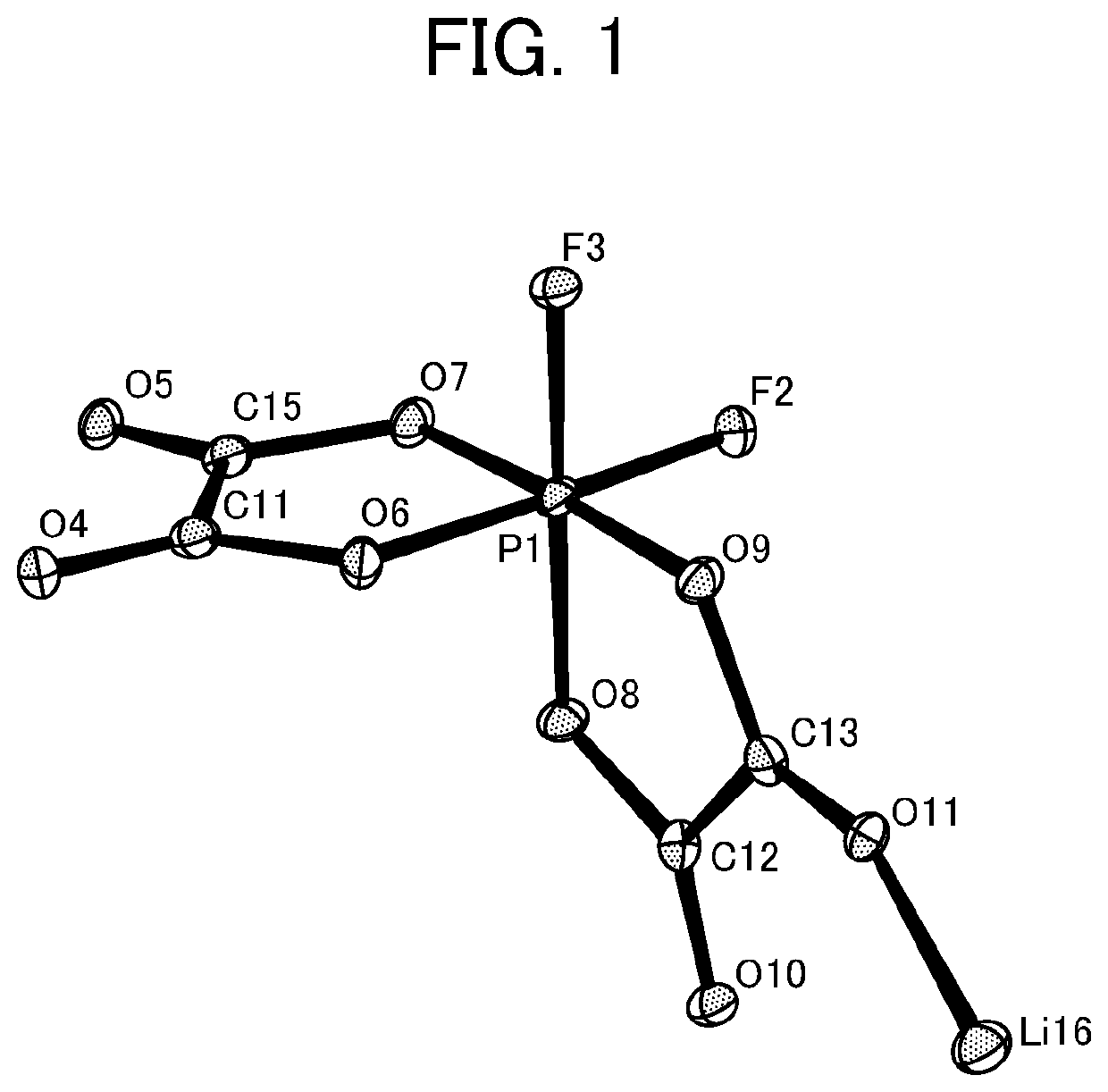Non-Aqueous Electrolyte Solution and Non-Aqueous Electrolyte Battery in Which Same Is Used
- Summary
- Abstract
- Description
- Claims
- Application Information
AI Technical Summary
Benefits of technology
Problems solved by technology
Method used
Image
Examples
examples
[0184]Below, the present invention will be described in more detail with reference to Examples, but the present invention shall not be limited to these in any sense. It is noted that Examples with sub-numbers may be collectively denoted, for example, Examples 1-1 to 1-56 may be collectively referred to as Example 1. The same may apply to Example 2 and so on and Comparative Examples, and electrolyte Nos.
synthesis examples 1 to 12
[0185]Below, the methods of synthesizing 12 types of difluoro ionic complexes (cis / trans isomers) and tetrafluoro ionic complexes will be described. The method disclosed in Patent Document 5 (Japanese Unexamined Patent Application, Publication No. 2003-137890), Nonpatent Document 1 (J. Chem. Soc. (A), 1970, 15, 2569-2574), and Patent Document 6 (Japanese Unexamined Patent Application (Translation of PCT Application), Publication No. 2003-505464) were adapted to synthesize ionic complexes. However, methods other than these may also be used for synthesis.
Synthesis Example 1
[0186]Synthesis of a difluoro ionic cis complex (1a-Cis) and a difluoro ionic trans complex (1a-Trans) in which the central metal M is P, and the ligand is oxalic acid, and the cation A is Li.
Synthesis Example 2
[0187]Synthesis of a tetrafluoro ionic complex (5a-Tetra) in which the central metal M is P, and the ligand is oxalic acid, and the cation A is Li.
Synthesis Example 3
[0188]Synthesis of a difluoro ionic cis co...
synthesis example 1
[0199]Synthesis of (1a-Cis) and (1a-Trans)
[0200]Lithium tris(oxalato)phosphate as a three-coordinate complex of oxalic acid was obtained according to the method disclosed in Patent Document 6 (Japanese Unexamined Patent Application (Translation of PCT Application), Publication No. 2003-505464). Lithium tris(oxalato)phosphate (30 g, 99.4 mmol) was dissolved in dimethyl carbonate (hereinafter, referred to as DMC) (120 mL), and hydrogen fluoride (hereinafter, referred to as HF) (11.9 g, 596.4 mmol) was then added. After stirring at 25° C. for 48 hours, residual HF and DMC were removed under reduced pressure. Then, DMC (60 mL) was added, and the concentrated residue was dissolved as much as possible, and then concentrated until the concentration of an Li salt became about 45 mass %. After removing insoluble components including oxalic acid by filtration, 49 g of a DMC solution of a mixture of (1a-Cis) and (1a-Trans) was obtained.
[0201]Dichloromethane (hereinafter, referred to as “CH2Cl2...
PUM
 Login to View More
Login to View More Abstract
Description
Claims
Application Information
 Login to View More
Login to View More - R&D
- Intellectual Property
- Life Sciences
- Materials
- Tech Scout
- Unparalleled Data Quality
- Higher Quality Content
- 60% Fewer Hallucinations
Browse by: Latest US Patents, China's latest patents, Technical Efficacy Thesaurus, Application Domain, Technology Topic, Popular Technical Reports.
© 2025 PatSnap. All rights reserved.Legal|Privacy policy|Modern Slavery Act Transparency Statement|Sitemap|About US| Contact US: help@patsnap.com



